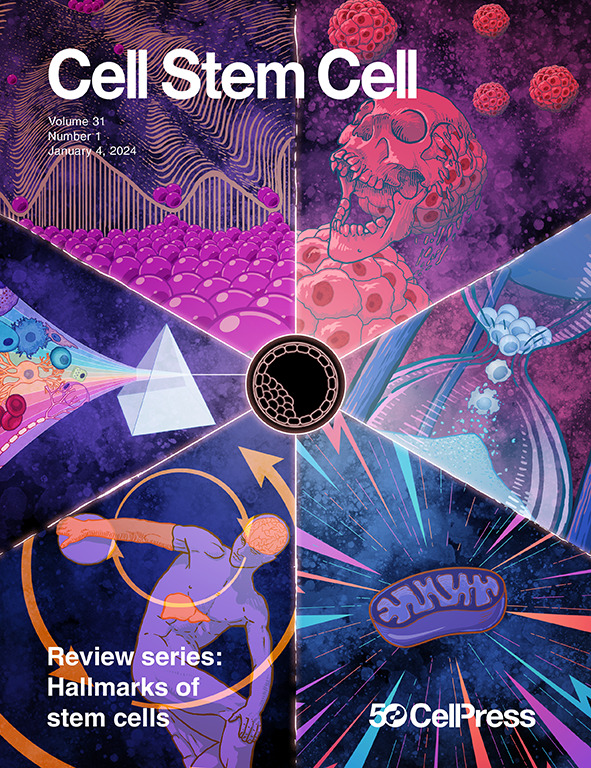Bacterial ADP-heptose triggers stem cell regeneration in the intestinal epithelium following injury
IF 20.4
1区 医学
Q1 CELL & TISSUE ENGINEERING
引用次数: 0
Abstract
ADP-heptose (ADP-Hep), a metabolite produced by gram-negative bacteria, is detected in the host cytosol by the kinase ALPK1, which engages TIFA-dependent innate immune responses. However, the function of ALPK1-TIFA signaling in primary cells and in physiological settings remains poorly understood. Here, we showed that, in the intestinal epithelium, ALPK1 and TIFA were mainly expressed by the intestinal stem cell (ISC) pool, where they controlled the replacement of homeostatic ISCs by new revival stem cells (revSCs) following injury. Mechanistically, ADP-Hep triggered pro-inflammatory nuclear factor κB (NF-κB) signaling and tumor necrosis factor (TNF)-dependent ISC apoptosis, which initiated a transforming growth factor β (TGF-β)- and YAP-dependent revSC program. Single-cell transcriptomics and lineage-tracing experiments identified Paneth cells as a cell of origin for revSC induction in response to ADP-Hep. In vivo, revSC emergence following irradiation or dextran-sodium-sulfate-induced injury was blunted in Tifa−/− mice. Together, our work reveals that ALPK1-TIFA signaling contributes to ISC turnover in response to bacterial detection in the intestine.

细菌adp -庚糖触发肠上皮损伤后干细胞再生
adp -庚糖(ADP-Hep)是革兰氏阴性菌产生的代谢物,通过激酶ALPK1在宿主细胞质中检测到,该激酶参与tifa依赖性先天免疫反应。然而,ALPK1-TIFA信号在原代细胞和生理环境中的功能仍然知之甚少。在这里,我们发现,在肠上皮中,ALPK1和TIFA主要由肠干细胞(ISC)库表达,在那里它们控制着损伤后新再生干细胞(revSCs)对稳态ISCs的替代。在机制上,ADP-Hep触发促炎核因子κB (NF-κB)信号和肿瘤坏死因子(TNF)依赖的ISC凋亡,从而启动转化生长因子β (TGF-β)-和yap依赖的revSC程序。单细胞转录组学和谱系追踪实验确定Paneth细胞是revSC诱导ADP-Hep反应的细胞来源。在体内,在Tifa - / -小鼠中,辐照或葡聚糖-硫酸钠诱导的损伤后出现的revSC被钝化。总之,我们的工作揭示了ALPK1-TIFA信号在响应肠道细菌检测时有助于ISC的转换。
本文章由计算机程序翻译,如有差异,请以英文原文为准。
求助全文
约1分钟内获得全文
求助全文
来源期刊

Cell stem cell
生物-细胞生物学
CiteScore
37.10
自引率
2.50%
发文量
151
审稿时长
42 days
期刊介绍:
Cell Stem Cell is a comprehensive journal covering the entire spectrum of stem cell biology. It encompasses various topics, including embryonic stem cells, pluripotency, germline stem cells, tissue-specific stem cells, differentiation, epigenetics, genomics, cancer stem cells, stem cell niches, disease models, nuclear transfer technology, bioengineering, drug discovery, in vivo imaging, therapeutic applications, regenerative medicine, clinical insights, research policies, ethical considerations, and technical innovations. The journal welcomes studies from any model system providing insights into stem cell biology, with a focus on human stem cells. It publishes research reports of significant importance, along with review and analysis articles covering diverse aspects of stem cell research.
 求助内容:
求助内容: 应助结果提醒方式:
应助结果提醒方式:


